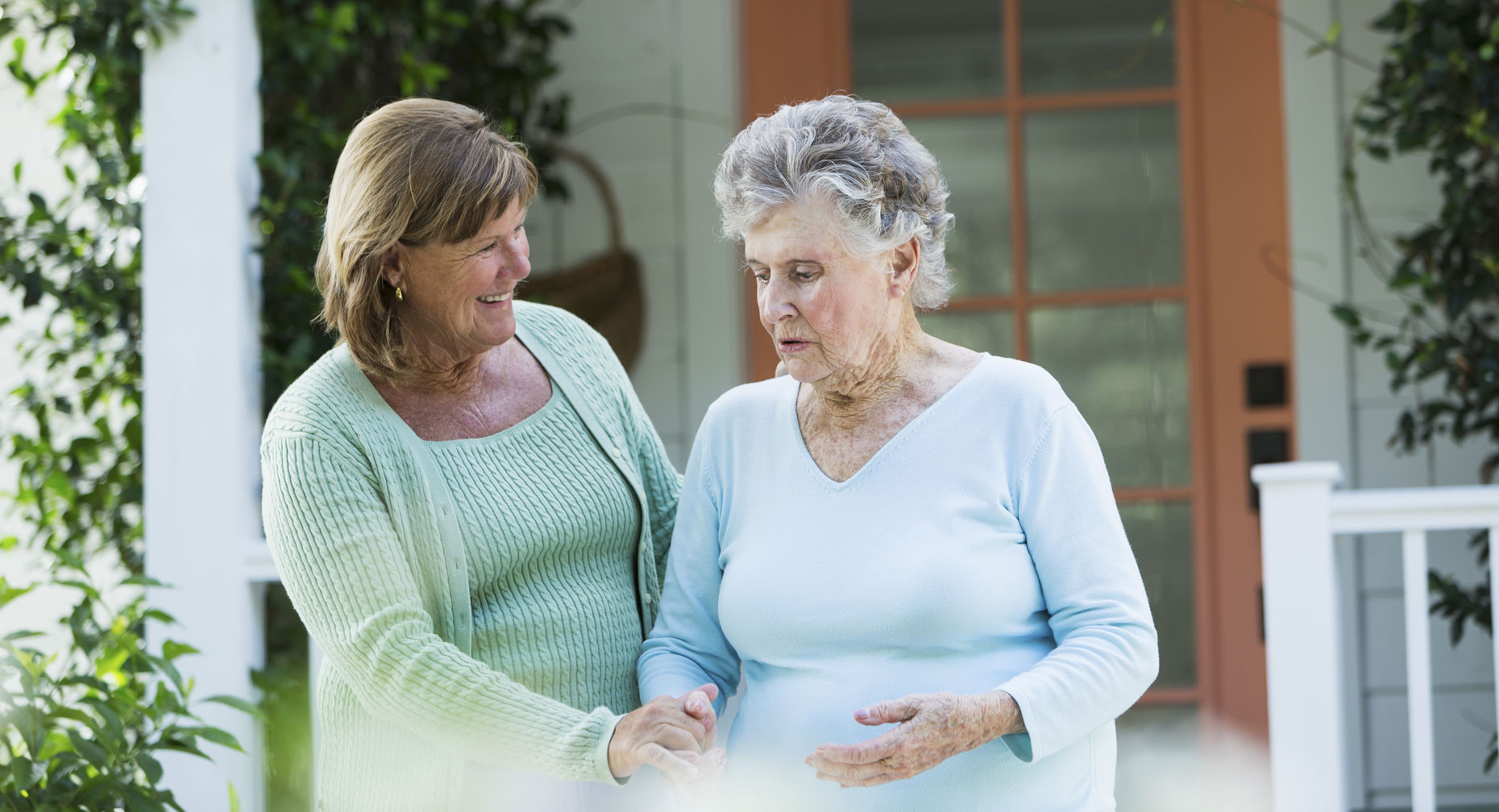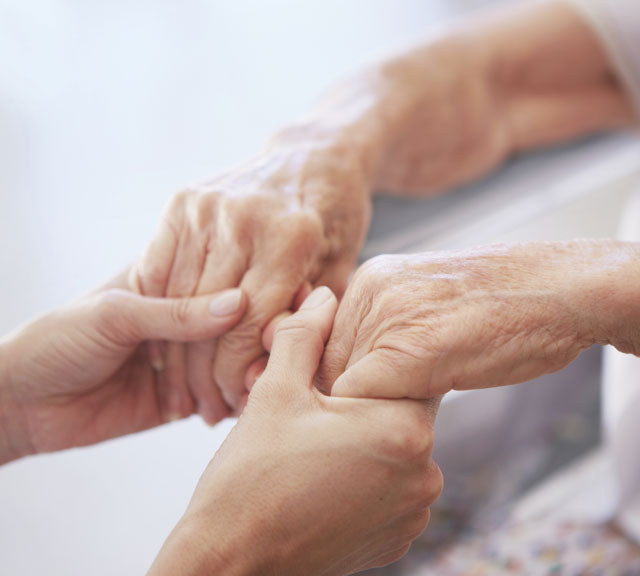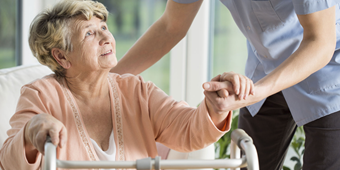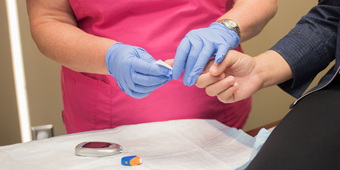Eight Tips for Caregiving after a Stroke

Find Your Perfect Match
Answer a few questions and we'll provide you with a list of primary care providers that best fit your needs.
It’s not uncommon to feel fearful and a bit overwhelmed as you undertake the care of a loved one who is recovering from stroke.
A stroke may have a wide range of effects on your loved one, even after the person is released to go home from the hospital. Emotional and mental issues may include depression, anxiety, memory loss, emotional outbursts, or confusion and unclear thinking.
Physical problems may include fatigue, pain and issues with walking, vision and swallowing. Being aware that these are part of the stroke recovery process may help you cope better in your role as caregiver.
Follow these eight tips to ease your journey with your loved one through the stroke recovery process.
1. Take Care of Yourself
You’ll be a better caregiver if you take care of yourself, too. Take time to exercise, eat a healthy diet and enjoy hobbies and leisure activities.
Reach out to family and friends for support and ask them when you need help with errands or chores.
2. Work with Your Loved One to Regain Movement
Weakness, numbness and stiffness of an arm or leg all are common after-effects of a stroke. Good positioning is important to help your loved one get moving again. It’s important to align the person’s head, shoulders and hips.
Properly positioning arms and legs is important, also, to prevent muscles near the joints from tightening. Provide support for a limp arm and gently straighten curling fingers. Keep the person’s feet flat on the floor or on a footrest. Good posture is extremely important for someone with weakness on — or who is lacking awareness of — one side of the body.
3. Strengthen Muscles
Follow the advice of your loved one’s physical therapist about simple stretches to help relax muscles in the arms and legs. Ask the physical therapist how to move the person’s limbs safely. Gradually increase strength and range of motion and set goals for getting out of bed, sitting and eventually standing. Also provide encouragement for fine motor skills such as bringing a hand to the mouth to eat or brush teeth.
4. Encourage Standing and Walking
Most people walk again following a stroke. Your loved one may only be able to stand for short periods at first. Holding onto parallel bars, leaning against a counter or using a walker or cane may help the person to stand longer and eventually walk. Shifting weight from one foot to another is a good practice to prepare him or her for walking. Ask about special treadmills or other equipment that may aid walking. A gradual increase in speed and distance may further the recovery.
5. Promote Everyday Self-Care
After a stroke, people can regain a sense of power by helping to take care of themselves. Daily use of affected hands often helps bring back function. As the function improves, encourage your loved one as much as possible to use the affected side and work toward recovery.
Using impaired arms and legs to bathe and dress helps regain muscle strength. You also want to promote safety and making tasks as easy as possible. Have your loved one follow these guidelines:
- Test the water temperature for a bath or shower with a hand or foot that was not affected by the stroke.
- Use grab bars, a shower seat, a hand-held shower, and a long-handled brush.
- Dress while sitting, starting with the affected side or limb.
- Wear shirts with snaps or Velcro closures. Use zippers with loops attached to them. Sweat pants or skirts with elastic waistbands also make it easier to dress.
After a stroke, people can regain a sense of power by helping to take care of themselves.
6. Manage Bladder and Bowel Problems
A stroke may affect your loved one’s bladder and bowel control. The problem may seem worse if he or she can’t walk to the bathroom alone or ask for help. Suggestions to help manage these problems include:
- Take the person to the toilet at set times, such as every two to three hours.
- Provide a bedside commode for your loved one to use at night.
- Have the person wear absorbent briefs to minimize embarrassment and cleanup.
- Request that the person not drink fluids or alcohol late in the evening.
7. Work to Improve Swallowing
It’s not uncommon to have trouble swallowing (dysphagia) after a stroke. This can increase the risk of choking or developing conditions such as aspiration pneumonia. The latter is an infection of the lungs that occurs when food or liquid goes into the lungs instead of the stomach.
If you are working with a speech therapist to correct swallowing problems, be sure to make all foods and drinks exactly as directed. The therapist may recommend specific textures and thicknesses to aid swallowing. You may be asked to turn your loved one’s head to a specific side to make swallowing easier. Some people need to avoid hot or cold items. Sometimes eating smaller amounts of food at a slower rate can help.
A therapist also may suggest exercises to strengthen mouth muscles and lip and tongue movement. These may all help to keep food in the mouth before swallowing.
Some people may need a feeding tube if they cannot take in a sufficient amount of food or drink by mouth. As swallowing improves, your loved one can gradually return to normal eating patterns.
8. Plan for Care at Home
A social worker or case manager can help you plan for care once your loved one comes home from the hospital or a rehabilitation center. Ask about:
- Home visits from a nurse who will check vital signs and generally evaluate the person’s progress
- Ongoing physical therapy exercises that you can oversee
- Help from speech and occupational therapists to help your entire family communicate better and complete daily living tasks with greater ease
- Adult day care options if you have to go to work or need a break during the day. This setting also provides social time with other people.
Try contacting other resources in your area, such as local or online support groups, churches and community social services.
You may also find help through:
- Life After Stroke — For Family Caregivers, American Stroke Association
 , (800) 553-6321
, (800) 553-6321 - Nation Stroke Association
 , (800) 787-6537
, (800) 787-6537 - Family Caregiver Alliance
 , (800) 445-8106
, (800) 445-8106
Find Your Perfect Match
Answer a few questions and we'll provide you with a list of primary care providers that best fit your needs.
Source: Premier Health




